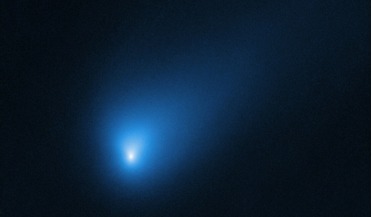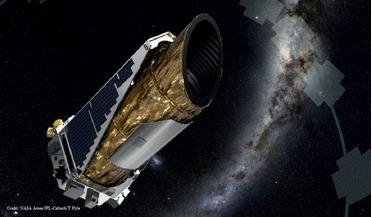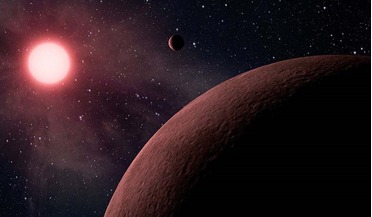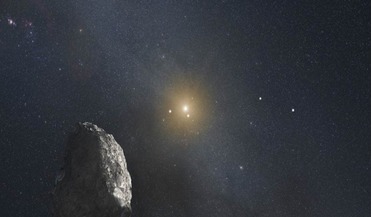 17 October 2019
Hubble gets a good look at interstellar visitor Comet 2I/Borisov
17 October 2019
Hubble gets a good look at interstellar visitor Comet 2I/Borisov
... of our Solar System, with its innermost edge at about 2000 times the distance between the Earth and the Sun. 2I/Borisov and ‘Oumuamua are only the beginning of the discoveries of interstellar objects paying a brief visit to our Solar System. There...
 October 2015
Finding Earth-like worlds: the tale of how Kepler-452b was discovered
October 2015
Finding Earth-like worlds: the tale of how Kepler-452b was discovered
... had a moment of pause, because when we first looked at the star’s parameters, although it was about the same temperature as the Sun, it had been assigned a radius of only 80% the size of the Sun. That seemed a little off to us. It’s quite unexpected...
 19 January 2016
Giant double-planet system around an evolved star detected by astronomers
19 January 2016
Giant double-planet system around an evolved star detected by astronomers
...Neptune and Pluto have a 3:2 resonance, meaning that Neptune will orbit the Sun three times in the same time that it takes Pluto to orbit the Sun twice. The discovery, while not unique, is relatively uncommon in exoplanet detections as relatively few...
 22 January 2016
Possible “Planet Nine” Discovery Announced
22 January 2016
Possible “Planet Nine” Discovery Announced
... Earth years. If a planet of that size is orbiting the sun beyond Neptune, it will affect the orbits of nearby objects. The planet appears to have an elliptical orbit and the closest it comes to the sun is about two hundred and fifty astronomical...
 14 December 2017
AI detects eighth planet orbiting distant sun
14 December 2017
AI detects eighth planet orbiting distant sun
..., and it whizzes round its host star once every 14.4 days. All of the planets in the Kepler-90 system are closer to their central star than the Earth is to the Sun. Because Kepler-90i orbits so close to its host star, its average...
 27 February 2019
FarFarOut beats FarOut as most distant Solar System body ever seen
27 February 2019
FarFarOut beats FarOut as most distant Solar System body ever seen
... this 300 kilometre wide object was discovered about 80 AU from the Sun; an astronomical unit is the mean distance from the centre of the earth to the centre of the sun - so around 149.6 million kilometres. Neptune for comparison is 30 AU away, which...